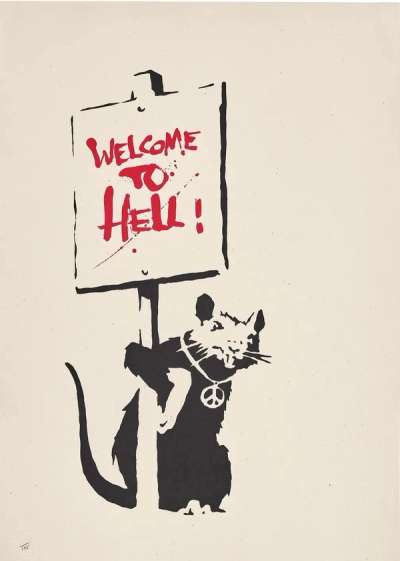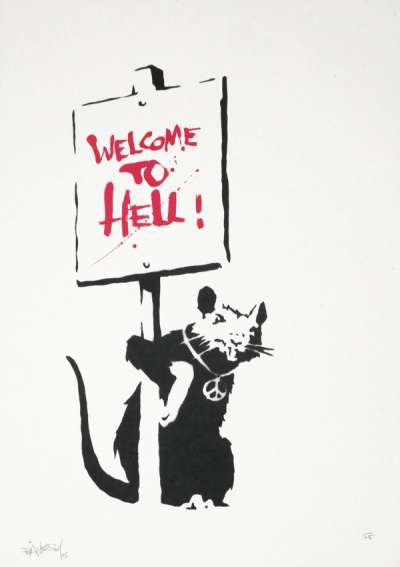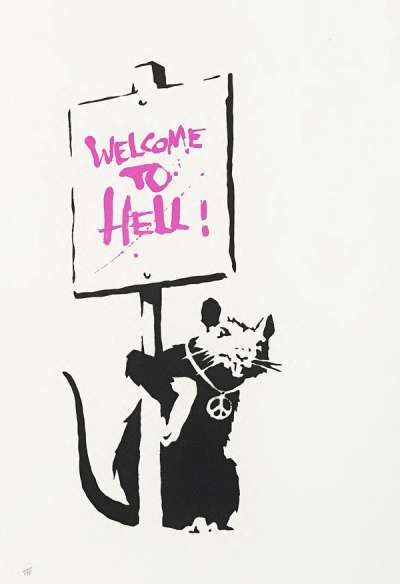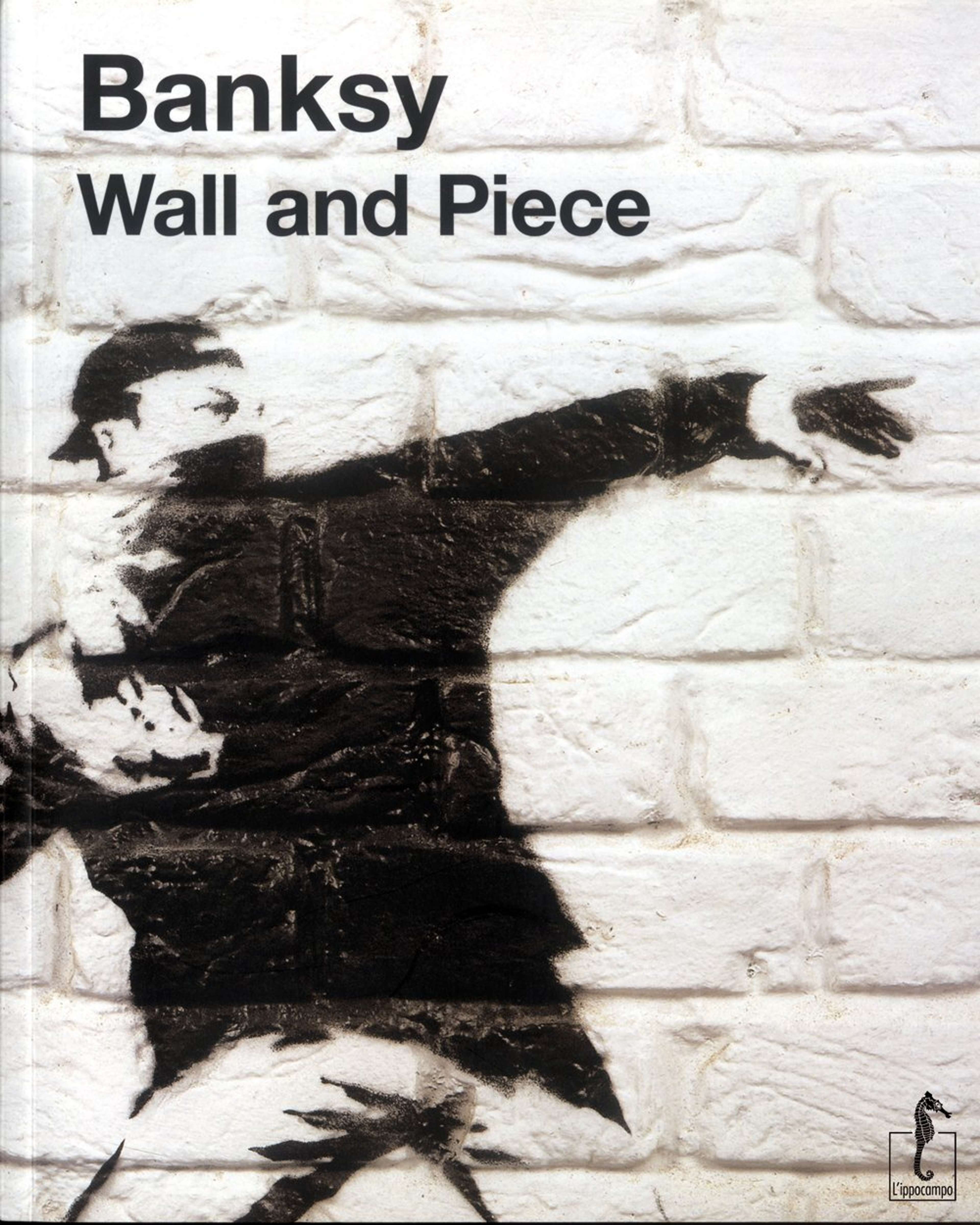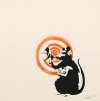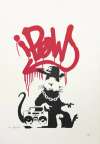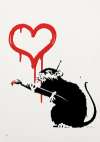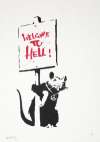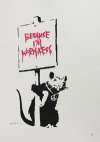Welcome
To Hell (Placard Rat)
As part of Banksy's broader Placard Rat series, a rat holds up a sign that reads "WELCOME TO HELL!" Intriguing, because here his hell-raising rat wears a peace sign necklace, Banksy, as ever, uses his rat character to preach that protest can take many forms and share many messages.
Banksy Welcome To Hell (Placard Rat) For sale
Welcome To Hell (Placard Rat) Value (5 Years)
Works from the Welcome To Hell (Placard Rat) series by Banksy have a strong market value presence, with 39 auction appearances. Top performing works have achieved standout auction results, with peak hammer prices of £111000. Over the past 12 months, average values across the series have ranged from £8500 to £24672. The series shows an average annual growth rate of 9.31%.
Welcome To Hell (Placard Rat) Market value
Auction Results
| Artwork | Auction Date | Auction House | Return to Seller | Hammer Price | Buyer Paid |
|---|---|---|---|---|---|
 Welcome To Hell (red) Banksy Unsigned Print | 1 Aug 2025 | Sotheby's London | £6,800 | £8,000 | £11,000 |
 Welcome To Hell (Pink) Banksy Unsigned Print | 29 Oct 2024 | Forum Auctions London | £9,350 | £11,000 | £14,000 |
 Welcome To Hell (red) Banksy Signed Print | 22 Oct 2024 | Sotheby's New York | £18,700 | £22,000 | £30,000 |
 Welcome To Hell (Pink) Banksy Signed Print | 23 Apr 2021 | Forum Auctions London | £59,500 | £70,000 | £90,000 |
Sell Your Art
with Us
with Us
Join Our Network of Collectors. Buy, Sell and Track Demand
Meaning & Analysis
Part of the 2004 Placard Rat print series, Welcome to Hell shows Banksy’s iconic stencilled rat character, clutching a protest placard. Said rat, painted in Banksy’s typical black and white stencilled style, stands up on its hind legs holding a placard complete with the words ‘Welcome To Hell’. Handwritten in bright red splattered paint, the text is reminiscent of blood.
In a complex double entendre characteristic of Banksy’s print-based works, the violence of the print's handwritten message contrasts with the peace sign, or CND symbol, held around the rat’s neck. The artist’s well-known, fiercely-critical stances towards law enforcement, militarism, capitalism and consumerism are palpable here. Indeed, this work seems to encapsulate the artist's anti-establishment beliefs, whilst taking aim at modern life in the over-surveilled city.
The other two works in the series, titled Get Out While You Can and Because I’m Worthless, were released in similarly-sized editions. The whole series comprises 75 signed prints and 175 unsigned prints in red and pink colourways. The placard rat is among Banksy’s most recognisable motifs, appearing time and time again in in situ murals on the streets of London, and around the world.
Rats feature heavily in Banksy’s iconography, thanks in part to the influence of prolific French street artist, Blek le Rat. Blek le Rat began using stencils to spraypaint rats onto the streets of Paris as early as the late '70s, bringing the urban Street Art movement to France for the first time. To learn more about Banksy's rats, see our guide here.
